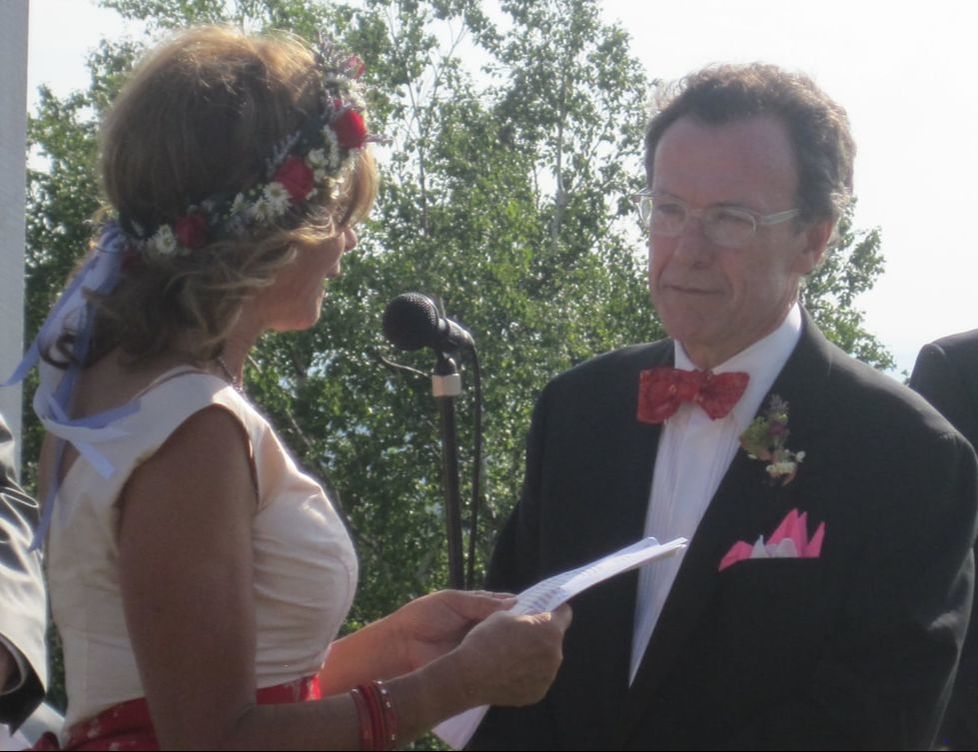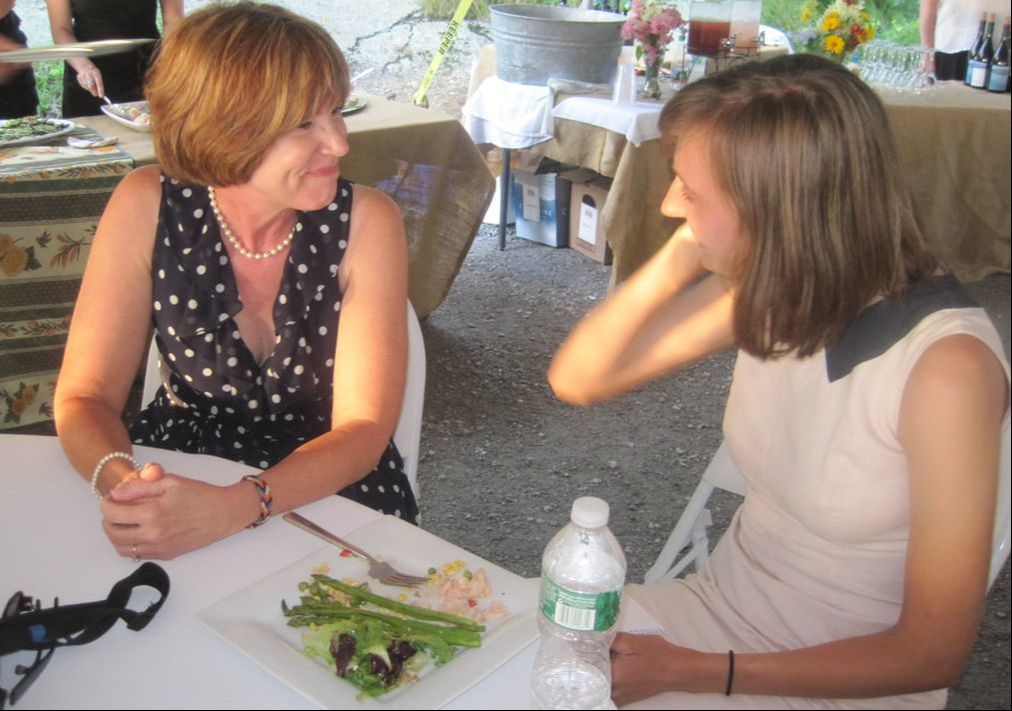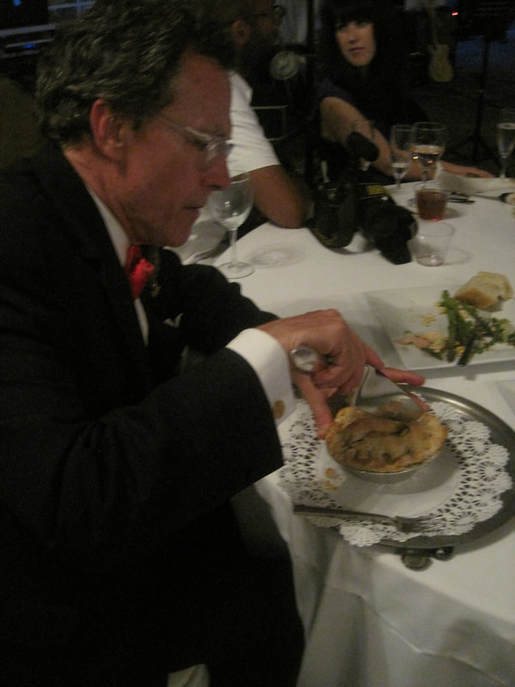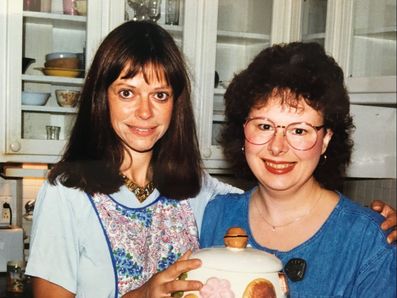 Joyce and Jim exchanged vows on Fourth of July weekend 2013 on a New Hampshire hilltop. In this moment, Joyce told everyone to get comfortable because she had something to read to Jim and it would take a while. We would have expected nothing less. What we didn't expect was that they wouldn't have long together before they battled the demon of cancer that took Jim. I’ve been a fan of author Joyce Maynard for 30 years. When I discovered her, she was knee-deep in raising kids and tomatoes, making pies, and beautiful Christmases. In the midst of all that, life got messy, and she didn’t shy away from sharing those parts, either. There came the illness, then death of her beloved mother, a painful divorce; dating and relationships. And who happened to be in New York City on 9/11? Joyce, of course, as though sent to chronicle another moment that we needed to see through her first-person lens. I would learn that Joyce had gained national fame as a teen with a New York Times magazine-cover essay whereby she rocketed to the description of "the voice" of her generation, and that led to a relationship with a famous man, her first heartbreak. But what interested me most was not the fame part, but the ordinary part of her life – the kids-and-tomatoes part. Add that homey side to the community-columnist and small-town-newspaper-reporter side of me, and I was hooked on her writing – and let her know. Joyce came off the page when she invited me to stay with her during her epic New Hampshire yard sale before her move to California in the late 1990s. Who could guess there would be a second invite to New Hampshire, this time to see her marry Jim, the eventual love of her life, the dashing California attorney? Yet there my friend Gay and I stood on a New Hampshire hilltop, watching the ceremony in July 2013. What nationally-acclaimed author gets that personal with her readers? While she has always detailed the life and times of her generation, as well as shared personal details from her life, as though each reader is really her close friend visiting over coffee, The Best of Us is one we all wish she didn’t have to write. She lost her love too soon. She tells us everything; things we don’t want to hear, but know she must say, about cancer and what you do when the person you love most is dying. Or before you know he is dying and you are frantically trying to find what will save him, and save you. But her fans have been around a day or two. We’ve seen cancer, and death, and pain, and disappointments along with our own hilltop moments. We understand. At the end of almost every chapter, there is a simple, but profoundly poignant point offered by Joyce, a takeaway even, for us all. For example, while addressing a frustration over an inconvenience due to her husband losing his car keys, she writes, “In the old days, I would have made some sharp remark. How could he? I didn’t do those things anymore. ‘If only,’ I often said, ‘you could learn the lessons of cancer without having cancer.’” She writes with candor, her signature, of course, in ways that sometimes make you wince and want to look away from plenty of ugly situations, not only of the cancer journey that we know won’t end well, but of heart-rending situations before the two found each other. We’re reminded of our own, personal, look-away moments. We're prone to hide them away rather than put them out there. The joy that sparkles in this book is that Joyce and Jim found each other, and got to experience travel and life and love in a condensed form that I would call blessings. Joyce and I are two different women in more obvious ways than we are alike. Yet perhaps at the heart of our curious connection is this shared core belief: That it isn’t real until it’s written. And that we don’t get to choose our life stories. They choose us. Then we tell them. She spent a year after Jim’s death writing this book, and now she’s touring with it, something she revels in, and finds energy from. Writing a book is necessarily a solo experience with quiet and isolation. Joyce recharges by meeting her readers, hearing how they identify with her words, and how she identifies with them. She will survive this. Jim had said he only wanted to be her good husband. He regretted, perhaps more than anything, the burden he would say he became to her, the pain his pain caused her. The way she can honor him now, I believe, is to press on and have a wonderful life, find new love and joy and, (I would add, most of all) faith. She told me once to “Keep telling stories.” I will stay tuned to hear hers. There will be new ones to find and I know she will write about them all. I hope that the next chapter will be one that makes her heart sing. Life is full of so much. Love, laughter, people we love and lose, relationships, sadness, disappointment, and moments that surprise and soar. She’s not done, this woman who chronicles life for the Baby Boomer generation. I still see the two of them, Joyce and Jim, on that New Hampshire hilltop four years ago. They had it all. From them, let us remember that our days are likewise numbered. And to cherish each and every one we get. Connect with her at www.joycemaynard.com. Her book is available in bookstores, on Amazon.com, and if you are fortunate enough to catch her on tour, from Joyce personally. Career community journalist Donna Cronk is author of two novels, Sweetland of Liberty Bed & Breakfast, and That Sweet Place: At Home in the Heartland.
2 Comments
Donna, There is one statement in this blog post that really struck me: "That it isn't real until it is written." I so get that. Writing is how I process life and learn from life. Putting life on paper takes the sting out of disappointments and hurts and prepares me to seek out and experience the "beauty from the ashes!"
Reply
Donna Cronk
9/29/2017 06:55:01 am
When I was in fifth grade, my best friend's grandma bought us five-year diaries. These volumes were basically what a Twitter feed is today giving the "headline news" of our lives. I felt compelled to record my life, no matter how uninteresting. It was still my life, and whatever happened didn't seem real until it was recorded there. Nearing half a century later, the pattern continues.
Reply
Leave a Reply. |
|



